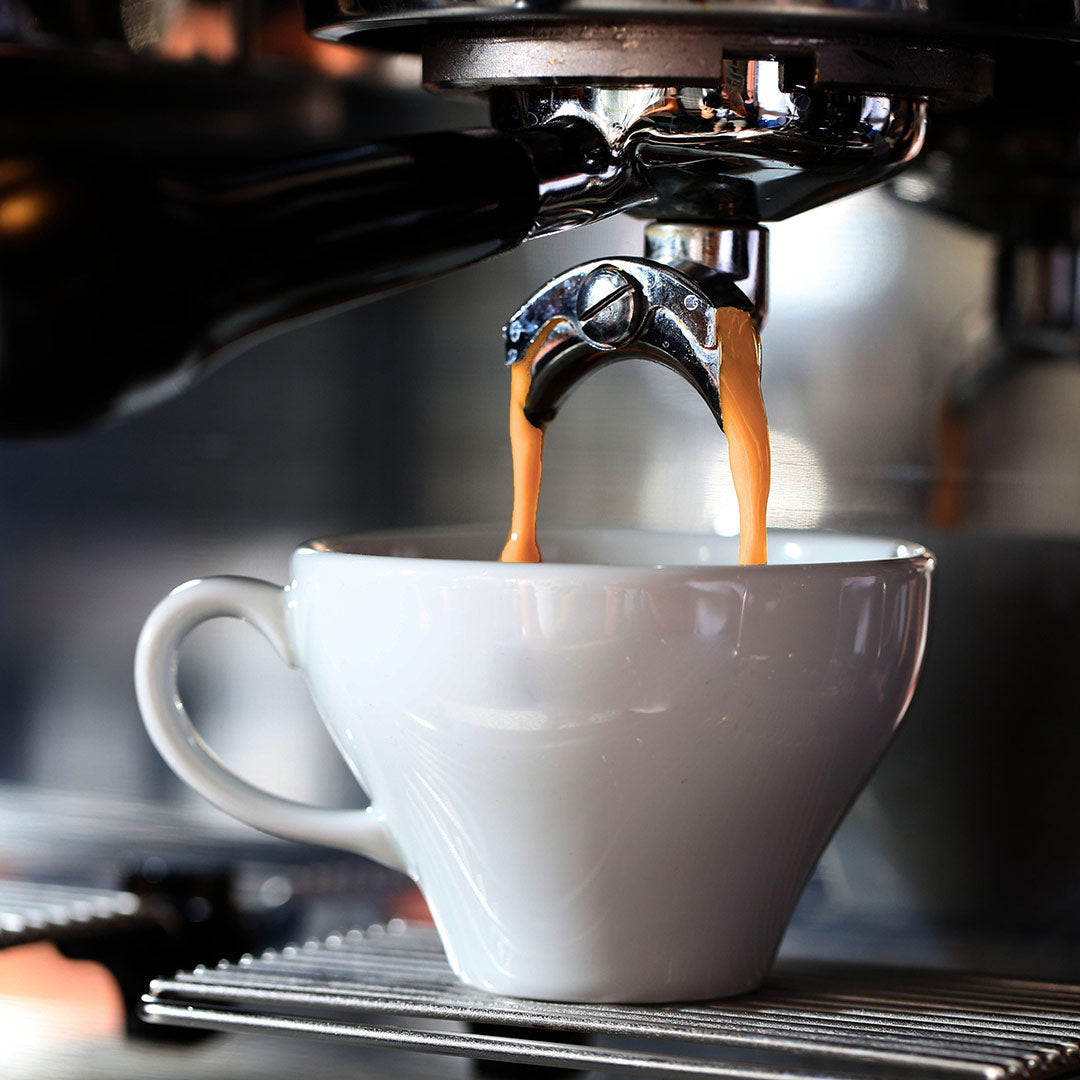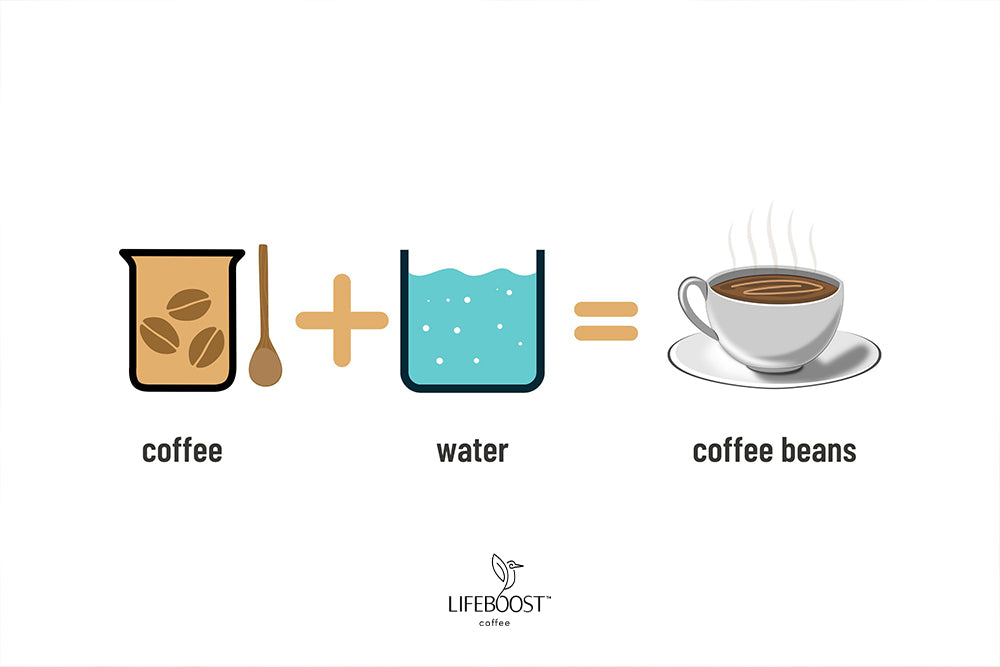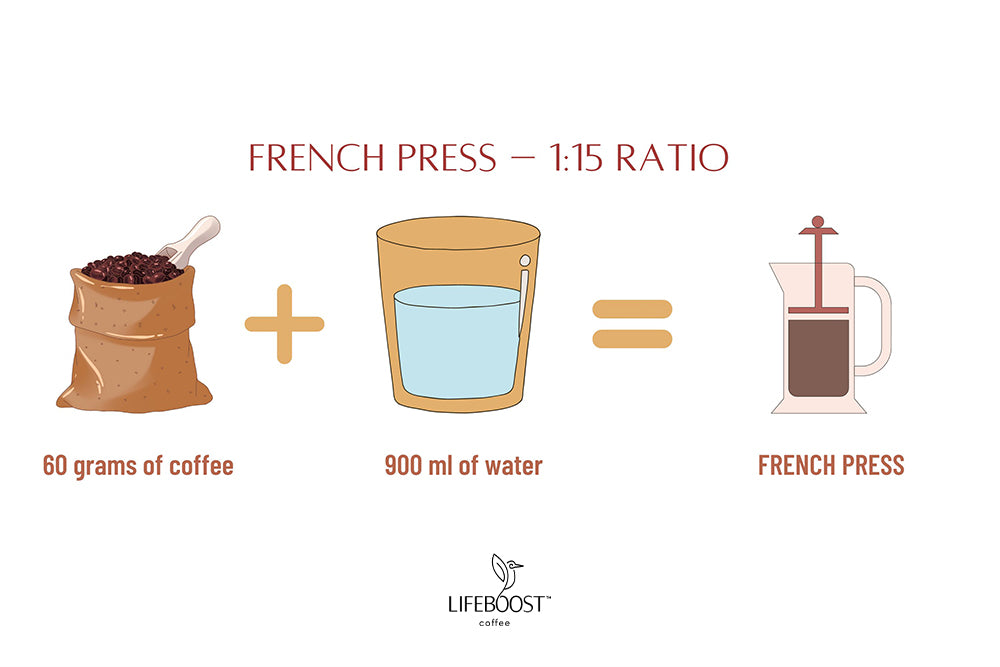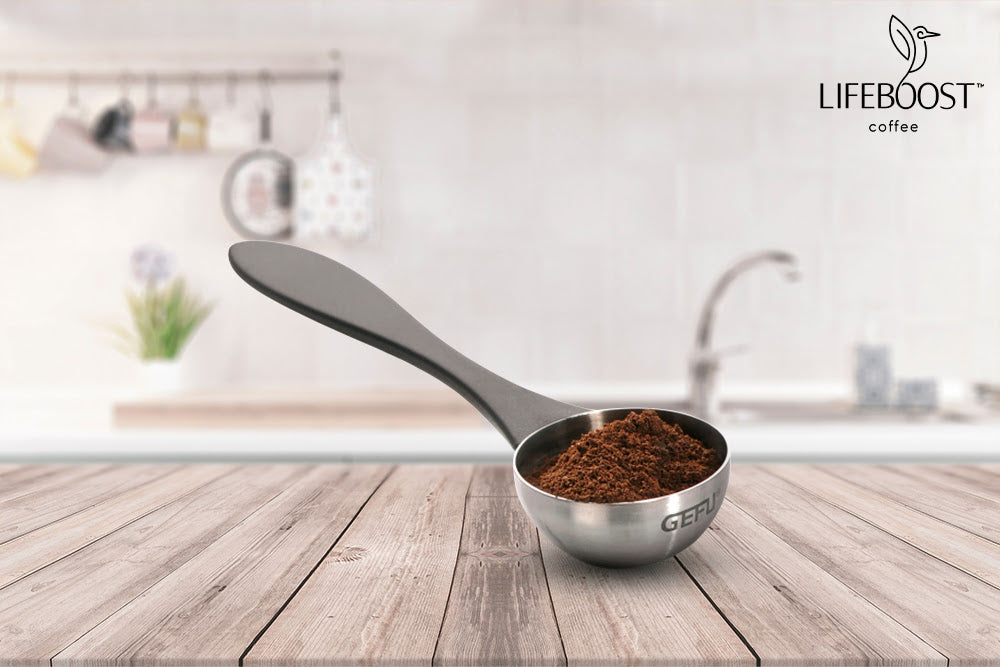
The Perfect Coffee-to-water Ratio and How to Measure it
Suppose you've ever wondered if your coffee tastes off but can't quite put the finger on why; it might be because you're not measuring it properly. With our Coffee-to-water Ratio Calculator, you can be sure that your coffee will always be perfect.
Now that you've decided to start brewing coffee at home, the next step is finding a recipe. However, with so many options online, it can be difficult to know where to start. This is where coffee consultants come in - they help businesses set up their cafe or brew bar by developing recipes for different types of coffee brewers.
One of the most important things a consultant does is tinker with ratios between water and coffee grounds to create the perfect cup of joe for each client's taste preference. So if you're overwhelmed by all the calculations involved, don't worry - we've done them for you!
Coffee to Water Ratios: Why They Matter

Brew ratios are important in coffee brewing because they allow you to easily adjust the intensity of your cup by adding or reducing the amount of coffee used. Our calculator has pre-set brew ratios based on industry standards and popular recipes, but feel free to experiment with different combinations until you find what works best for you.
Factors such as the type of coffee, brewing equipment, and personal taste preferences will all impact which coffee to water ratio works best. If you're curious to learn how we arrived at our default ratios for regular-strength coffee, keep reading!
Automatic Drip Machine – 1:16.67 Ratio

Pour Over – 1:16.67 Ratio

Auto-drip machines and pour-over brewers work the same way, except you have to heat and pour the water onto the coffee grounds yourself. The manual option provides more room for creativity and customization, so you can end up with amazing results.
Whenever I try out a new type of coffee, I always stick to the 1:16.67 brew ratio. While not all my brewing attempts have been perfect, they could still give me an idea of what worked and what didn't. One great combination that fits a 6oz cup is 12 grams of coffee to 200 ml of water, giving you around 176 grams of brewed coffee. You can adjust this recipe as needed for different cup sizes and preferences. With this coffee to water ratio, I've achieved flavorful brews every time!
French Press – 1:15 Ratio

The French Press is another popular manual brewing option. It has several advantages over drip machines, such as steeping the coffee for a longer time and providing more control regarding water temperature.
Brew ratios for French presses tend to be much higher than those for pour-overs to compensate for the poor extraction rates of French presses. The optimal brew ratio is 1:15, which gives a tastier cup of coffee than the popular coffee to water ratios while also resulting in a slightly stronger drink. This is often referred to as the "Goldilocks zone" for French presses, allowing you to create a balanced cup of coffee with just the right amount of strength and flavor.
When using a French press, most experienced baristas also recommend using a 1:15 brew ratio, or 60 grams of coffee per 900 ml of water. This coffee to water ratio produces a strong, full-bodied cup of coffee that will satisfy any craving.
Aeropress – 1:15 Ratio (Inverted)

Cold Brew – 1:8 Ratio

Siphon – 1:15 Ratio

Guide To Coffee Cup Size

A Standard Coffee Cup

U.S. Measuring Cups
You can use a standard U.S. measuring cup to measure both dry and wet ingredients. We've designed our calculator so that you can choose between coffee and water as options for measuring these two things respectively.
U.S. Dry Cup
If you're making coffee for one or two people, a U.S. cup (about 16 tablespoons or 80 grams of dry ingredients like coffee) will be too much. However, it comes in handy when you're making bigger recipes.
For example, if you use one cup of coffee grounds, you can make six ounces of coffee for eight people.
U.S. Liquid Cup
For liquid ingredients, such as water, a U.S. Customary cup typically measures 236ml. However, the U.S. Legal definition is practically equivalent to 240ml. For convenience's sake at home, we use the latter.
Here's an example: If you have one cup of hot water, that's enough to make a 6oz cup of coffee. Additionally, you'll have some leftovers in the kettle (about 2oz or 60ml) to pre-heat and rinse!
Other Cup Sizes
Besides the U.S. cup, there are other measurements to keep in mind. It's by no means an exhaustive list, but here are a few of the most common cup sizes you'll come across in coffee recipes:
Metric Cup (8.45OZ OR 250ML)
Adopted by Commonwealth nations that use the metric system, such as Canada, Australia, New Zealand, and the United Kingdom, this measurement is not metric. This cup is equal to 250ml, which is slightly different from the U.S. customary cup (236ml).
Japanese Cup (6.76OZ OR 200ML)

Traditional Japanese Cup (6OZ OR 180ML)
This measurement is equal to 180ml, which is slightly smaller than the U.S. cup (236ml). It's mainly used for traditional Japanese tea ceremonies and other special occasions.
The shakkanhō measuring system used a cup definition of around 180ml until standardization efforts in 1959. After the change to 200ml, the Japanese rice cup has continued to be commonly found due to its inclusion in rice cookers. In Japan, the traditional cup measurement is still widely used in kitchens for measuring rice, so it's useful knowledge to have if you're making coffee.
Here's a pro tip If you have one of these, it's the perfect amount of water needed to brew coffee on our calculator!
Most Coffee Makers Cups (5 Ounce OR 150ML)
The 5-cup Mr. Coffee is the most popular cup in America and will make 25 ounces, or 750ml, of coffee - which is why we recommend people buy a larger one if they're only making one purchase.
Other Coffee Makers Cups (4OZ OR 120ML)
Japanese manufacturers use 4oz or 120ml to define brewer sizes to make things more confusing. Curiously, this is also the amount used by the Technivorm, a highly regarded coffeemaker company. The Hario TCA-3, for example, is advertised as making three cups of coffee. However, it can only hold 360ml of liquid - that's only enough for two standard coffee cups.
Just like we recommended with American coffeemakers, you'll want to size up when it comes time to purchase one of these.
Grams or Tablespoon?
If you're looking for the most accurate and precise measurements regarding brewing coffee, you should invest in a digital gram scale. However, if you're not comfortable using scales or would prefer to stick with tablespoons (or other volumetric measuring tools), we've got some advice for you that will help improve your brews.
We focused solely on tablespoons in our testing, but you can still benefit from the advice regardless of whether you're using teaspoons or cups. We ran several experiments to find out some helpful tips and tricks. Here's what we discovered:
Whole Beans Vs Ground Coffee
In testing, we found that using slightly heaping tablespoons yielded nearly identical weight results for whole beans and ground coffee. Freshly grinding your own coffee is always best, but if you don't have a grinder handy, at least you'll be close to our recipe with pre-ground coffee!
The Size of the Grind Doesn't Matter
The same results held true for various grind sizes - from coarse to fine. So don't worry too much about getting the exact size of the grind - just make sure your brewing method is suited to the grind size you pick.
Darker Roast Vs. Lighter Bean

Experimentation is key to finding the right measurements for your own specific needs. Ultimately, it's best to measure out coffee, so you get the desired cup. This will ensure consistent results each time.
Here's Our Recommendation
If you are making a medium or light roast coffee, use less coffee than what the recipe calls for. This will help to avoid brews that are all wrong!
For a medium roast, try reducing the amount of coffee by 1/5. For example, if the recipe calls for 5 tablespoons of coffee, use 4 instead. For light roast, reduce the amount of coffee by 1/3. When the recipe calls for 3 tablespoons of coffee, use 2 instead.
Reducing the amount may not be the most elegant solution, but it will help ensure you don't end up with a bitter cup of coffee. Try this method out and see if it works for you! You may be able to find your perfect balance between strength and flavor.
What is Coffee Scoop, and What Does it do?

A coffee scoop is designed to measure the right amount of ground coffee for each cup. It helps ensure that you get the same flavor and strength with every cup of coffee. The scoop size will depend on your preferred brewing method, but it's important to remember that even small differences can impact the taste.
What Should be The Ideal Scoop Measurement?
Suppose you don't have a scale or tablespoons; do not worry! Every coffeemaker comes with a built-in scoop. Now what?
Luckily, most coffee scoops are equivalent to around two tablespoons or 10 grams of ground coffee. However, if you want to ensure the coffee to water ratio is spot on, why not put it to the test? Measure out the scoop of coffee and then weigh it to confirm - you'll know for sure if your cup will be too strong or weak.
All Scoops are not Created Equal
However, you should know that not all coffee scoops are created equal. Different types of coffee makers can also come with varying size scoops. For example, the Aeropress scoop is slightly larger than the French press scoop. Some will measure more than others, so do a test run before brewing your final cup.
Traditional metal scoops are most common, but plastic versions exist as well. Some coffee enthusiasts prefer ceramic or stainless steel scoops because they don't retain heat like metal ones. Some specialty coffee shops offer custom-made wooden scoops for an even more unique experience.
How Does Scoop Impact The Way Your Coffee Taste?
The scoop's size directly impacts your coffee's flavor and strength. A larger scoop will produce a stronger cup of coffee, while a smaller scoop will make it weaker. It's also important to note that too much ground coffee can make your beverage bitter, while too little may not extract enough flavors from the grounds.
How to Measure Coffee with a Scoop for the Perfect Cup?
To make sure you get the perfect cup of coffee every time, it's best to measure out your scoop. There are a few ways to do this.
First, you can use a kitchen scale and measure your desired amount of coffee. This is especially helpful for those using specialty beans or just wanting to be exact.
Alternatively, you can also fill the scoop up with coffee until it's slightly overflowing, then level it off with a knife.
Finally, if you don't have a kitchen scale or knife handy, there is always the tried and true method of "eyeballing it." This involves filling the scoop until it looks like enough coffee for one cup. As long as you are consistent with your measurements, this should produce a satisfactory cup every time.
Frequently Asked Questions (FAQ)
What is the perfect ratio of coffee to water?
The Golden Ratio is a guideline for making coffee that tastes good. It specifies two tablespoons of ground coffee for every six fluid ounces of the brewing water, or 1:18. However, this good ratio often results in weak coffee.
You'll have to increase the ratio to make coffee that packs more punch. This means adding more ground coffee for every six ounces of water.
The Coffee Brewing Control Chart from the National Coffee Association and Specialty Coffee Association recommends 55g/L for a balanced cup of coffee - this is just over a 1:17 ratio.
Experiment with different ratios to find the best flavor for your taste buds. It will take some trial and error, but you'll be rewarded with a great-tasting cup of coffee in the end!
Do Coffee Pots Measure Using Cups or Ounces?
Most coffee makers measure in cups, not ounces. A cup of coffee typically equals 6 ounces or 177 ml, so it's important to ensure accurate measurements when using a scoop. If you're using tablespoons instead of scoops, remember that 1 tablespoon equals 1/2 ounce or 3 teaspoons of ground coffee.
Different coffeemakers use different measurements for coffee cups. American brewers typically default to 5 fluid ounces per cup, while Japanese pots use 4 fluid ounces per cup. Check your coffeemaker's manual for the exact measurements, or measure out the coffee yourself.
How Can I Measure Coffee Without a Scale?
If you don't have a scale handy, it is measuring your coffee accurately is still possible. You can use measuring spoons or even eyeball the desired amount of ground.
For example, 1 tablespoon of ground coffee equals 6 grams (1/4 cup = 24g). Once you know how much a tablespoon of coffee weighs, it's easy to measure the desired amount of grounds.
How Can I Measure Coffee Without a Scoop?
If you have one, you can use a large dinner spoon to measure out 1.4 tablespoons of coffee grounds for each cup you want to brew. Alternatively, if brewing bigger servings, approximately split up your coffee bag into quarters to make 5 cups of regular-strength auto-drip coffee. A quarter of a typical 8oz bag is equivalent to 2 dry ounces. Once you've determined the number of grounds needed for your desired cup, use your spoon or scale to measure out the right amount before adding it to your filter. This will ensure that each cup of coffee you brew has the perfect flavor and strength.
How Much Ground Coffee do I Need to Brew in a Pot?
This will depend on the size of your coffee pot, but a good rule of thumb is to use 1 tablespoon per 6 ounces of water for each cup you want to brew. For example, for a 12-cup pot, you'll need 12 tablespoons (72g) of ground coffee.
Are There any Special Considerations for Cold-Brewed Coffee?
Yes! Cold brewing requires a much higher ratio of grounds to water; it's recommended that you use 5 parts cold water and 2 parts ground coffee. This means that if you're making 32oz (1L) of cold brew, you'll need to use 10 ounces (280g) of ground coffee.
To Sum It all Up
When brewing coffee, it's important to remember that the recipes/measurements provided should only be used as a guide. Ultimately, you should always let your own taste be the deciding factor when choosing how much of each ingredient to use. That said, knowledge of volume conversions can come in handy without a scale. So, take the time to become familiar with this; it will serve you well in keeping your coffee consistent every time.
Check out Lifeboost Coffee Embolden Dark Roast.
- https://www.roastycoffee.com/measure-coffee/
- https://counterculturecoffee.com/blog/coffee-basics-brewing-ratios
- https://honestcoffeeguide.com/tools/coffee-to-water-ratio/
- https://www.foodnetwork.com/recipes/articles/coffee-water-ratio
- https://thedarkestroast.com/coffee-to-water-ratio/
- https://www.bonappetit.com/story/the-absolute-most-important-factor-in-brewing-great-coffee
- References for the article to confirm data and information.






